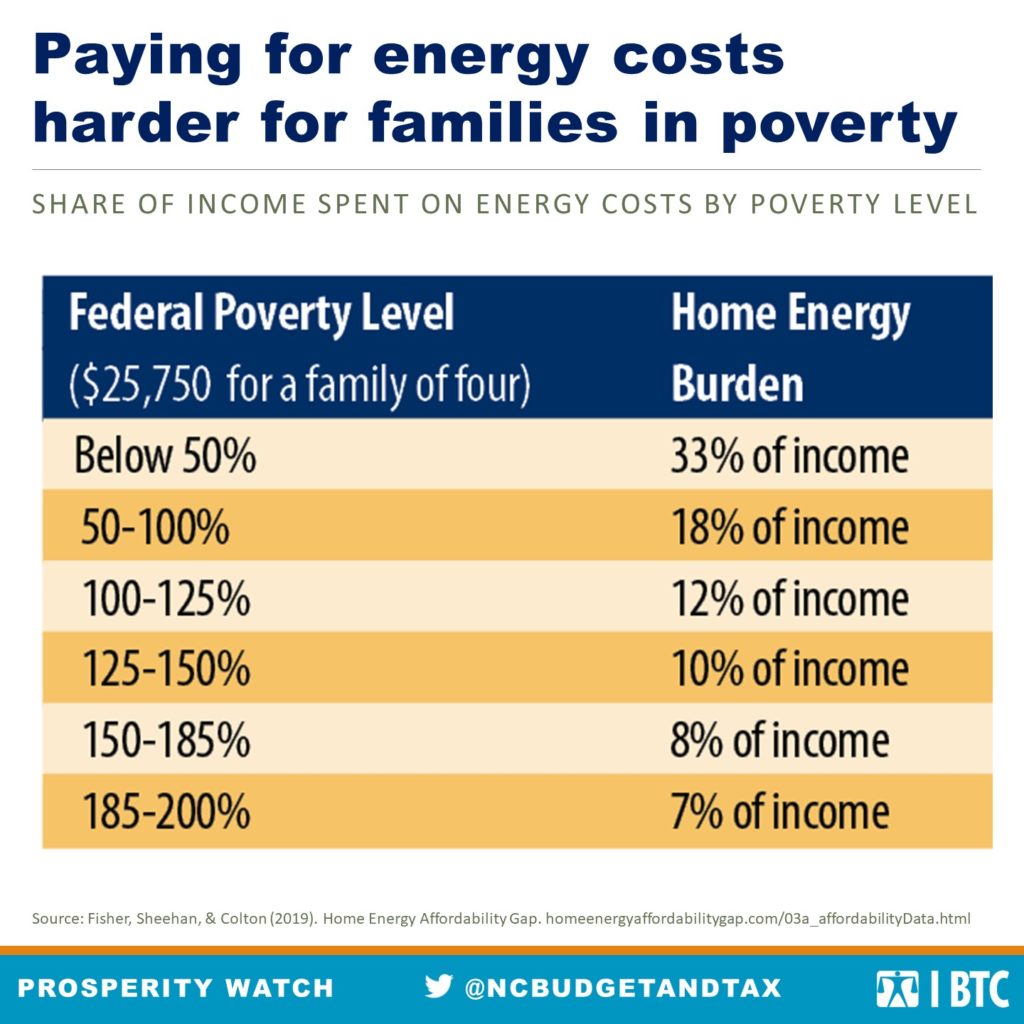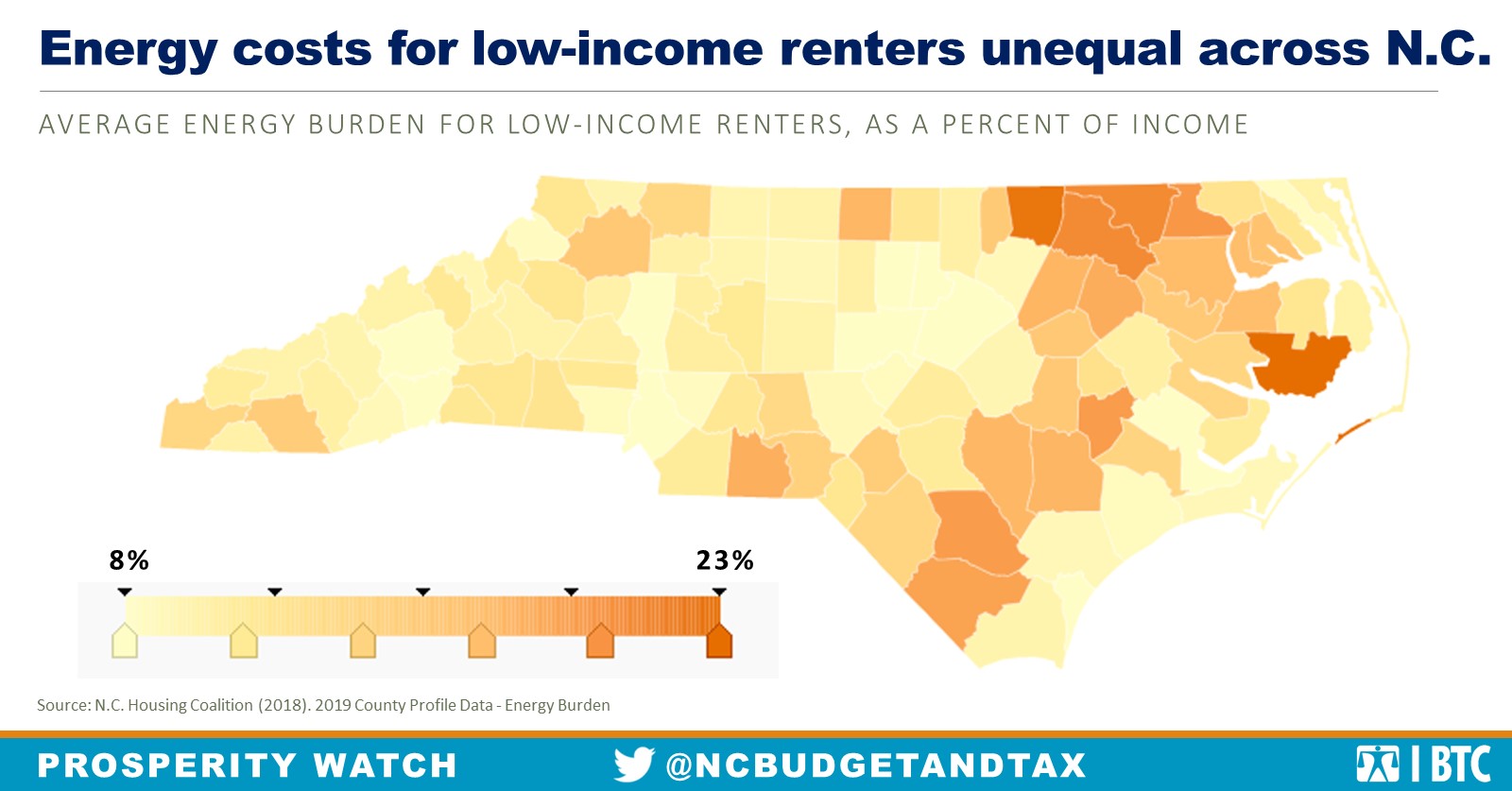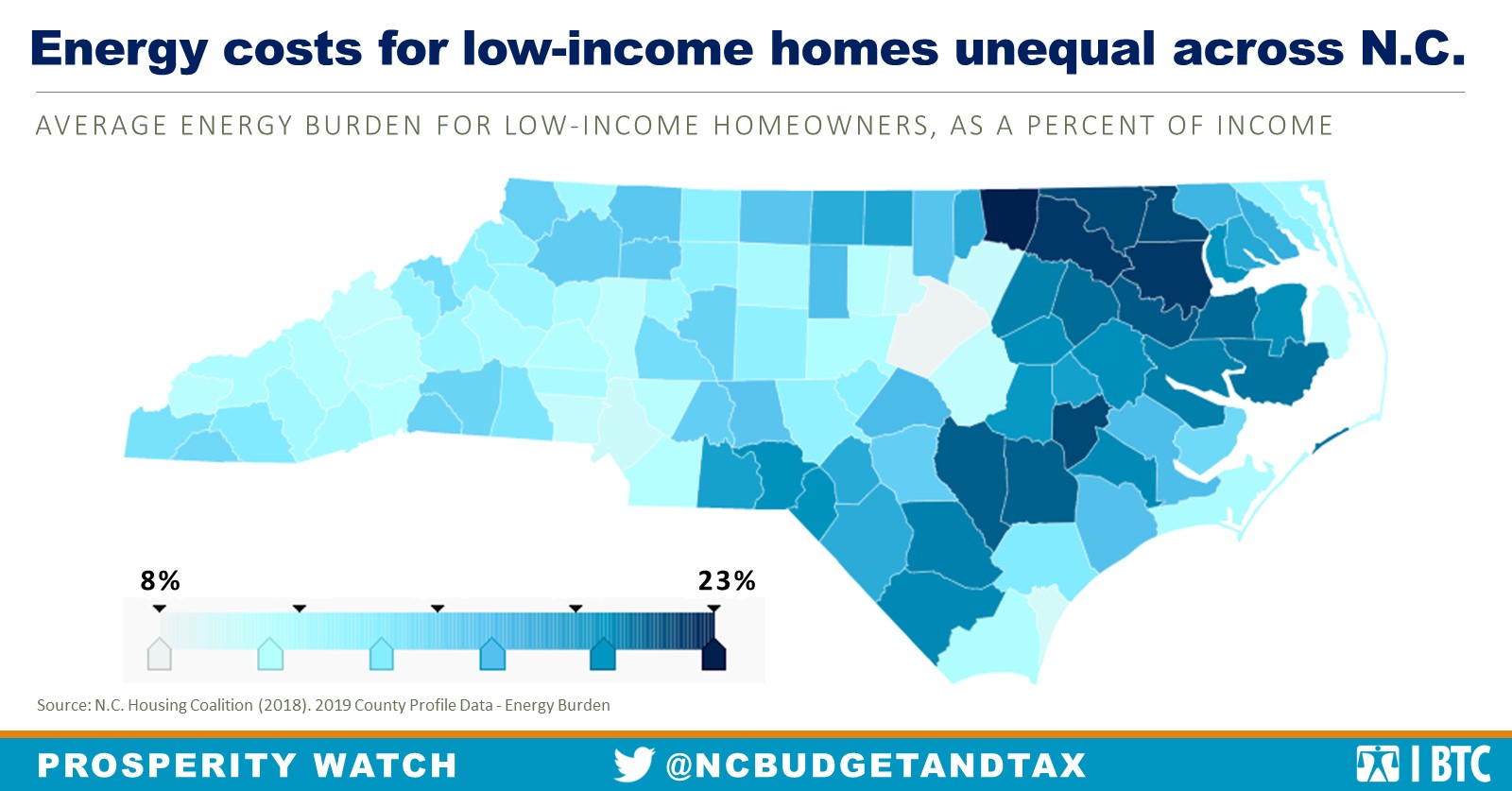 As temperatures start to drop, many North Carolinians are turning up the heat in their homes, which can get expensive. Energy affordability is particularly difficult for low-income families, which spend a larger share of their income on energy costs than their wealthier neighbors. Households earning below 50 percent of the Federal Poverty Level (about $13,000 for a family of four) spend 33 percent of their income (about $4,000), on energy costs each year. Even families making 200 percent of the Federal Poverty Level ($51,500 for a family of four) spend 7 percent of their income (about $3,500) on energy costs per year.
As temperatures start to drop, many North Carolinians are turning up the heat in their homes, which can get expensive. Energy affordability is particularly difficult for low-income families, which spend a larger share of their income on energy costs than their wealthier neighbors. Households earning below 50 percent of the Federal Poverty Level (about $13,000 for a family of four) spend 33 percent of their income (about $4,000), on energy costs each year. Even families making 200 percent of the Federal Poverty Level ($51,500 for a family of four) spend 7 percent of their income (about $3,500) on energy costs per year.
Approximately 1.4 million North Carolinians living at or below the federal poverty level struggle to pay their energy bills, and many more feel burdened by energy bills. Energy costs are unequally distributed across the state. The maps below show the average energy costs as a percentage of income for all homeowners and renters earning less than 50 percent of area median income.


On average, energy cost burdens are heavier for homeowners (14.33 percent) than for renters (11.36 percent). There are at least 5.2 percent of renters and 7.9 percent of homeowners in every county who are energy cost burdened. Warren and Hyde counties have the highest percentage of energy cost burdened homeowners and renters, respectively. These maps show that people with low incomes in eastern counties experience a greater energy cost burden, but every county has work to do before everyone can afford their energy bills.
One reason why energy costs are higher for people with low incomes is because they tend to live in older, less energy efficient homes and apartments. Energy upgrades are typically required for newer homes and can be cost-prohibitive and inaccessible for low-income households. Coupling energy efficient upgrades with affordable housing development will help ensure that no one in North Carolina is left out in the cold.
 Justice Circle
Justice Circle